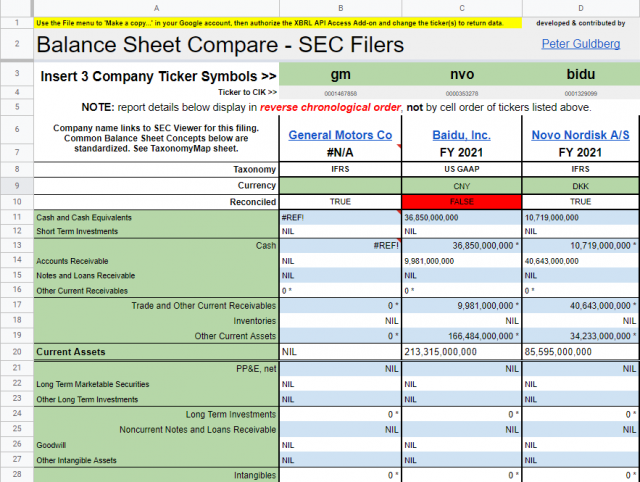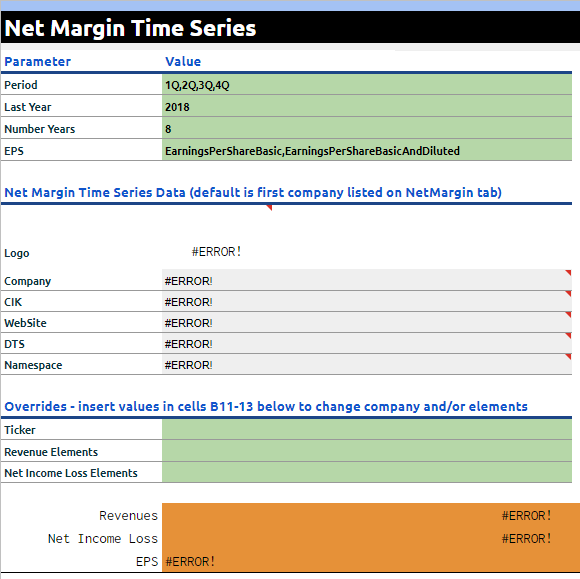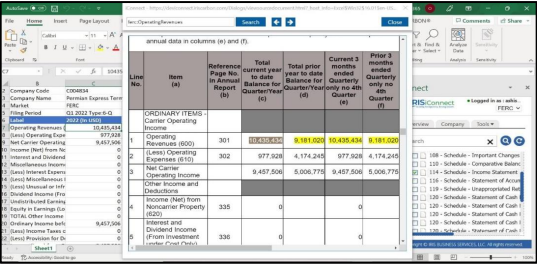The Benefits of Structured Open Data
With the advent of structured open data for business reporting, financial analysts have access to a whole new set of tools for granular analysis of corporate data with which to produce nuanced insights. The introduction of several mandates by regulators across the globe in recent years has ensured a favorable critical mass of producers and users that make this kind of open data viable and useful.
While the term open data itself is recent, the philosophy behind it has existed for far longer. Structured data formats for business reporting have been in use for over a decade. Most notable among them is the eXtensible Business Reporting Language (XBRL), which has emerged as the format of choice for corporate data reporting owing to its ability to facilitate the smooth and transparent exchange of data and reduce costs related to information processing.
Starting with the US SEC’s introduction of this format way back in 2009, it has since been adopted by various regulators in the UK and most recently by the European Securities and Markets Authority in Europe in its inline form. Inline XBRL, more commonly known as iXBRL is a derivative of the open XBRL standard that allows a single document to be both human and machine-readable.
Structured data formats like XBRL have greatly enhanced the ability to access, consume and digest data for investors, analysts, and various other stakeholders. Here are 4 main benefits it brings to financial analysis:
- Automating Data Collection and Reporting – If the sources of information are in XBRL, analysts can automate the data collection process where information from different company divisions with different accounting systems can be assembled quickly, cost-effectively, and efficiently. Different report types using varying subsets of this data can be generated with minimum effort.
- Enhancing Transparency and Comparability – When structured corporate data standards like XBRL are used across the board, transparency gets a big boost and it becomes much easier to compare the performance of two or more companies across sectors and geographies. Consequently, the validity and integrity of the data being reported also improve manifold.
- Efficiencies in Time and Cost – Data automation as a result of electronic retrieval in XBRL by users streamlines handling, cutting out time-consuming, costly collation and re-entry of information. This allows resources to be freed up for more critical activities that may include those core to revenue generation or more value-added aspects of analysis leading to better decision-making.
- Benefits to Institutions – The use of XBRL saves precious resources for lenders who are now able to process and validate data quicker and expedited their dealings with borrowers and other prospects. Government departments and regulators are more easily and efficiently able to collect, assemble, validate and review data that is being published by public companies to them.
Financial analysts who depend on publicly available corporate data to make sensible decisions on acquisitions and divestments have come to rely on the simplicity and robustness of the XBRL standard to conduct detailed financial analysis. In the next section, we list 5 tools from XBRL US that enable interested stakeholders to analyze XBRL data published by companies.
Presenting 5 Analytics Tools from XBRL US and 1 Bonus Tool For Financial Analysts
1. Balance Sheet Compare for SEC Filers (Google Sheets)
This free template contributed by Peter Guldberg allows comparing the balances sheets of up to 3 companies simultaneously by querying the most recent data from the XBRL US Database of Public Filings once the relevant tickers (or stock symbols) are input by the user in the respective fields.
It features a list of elements that are common accounting concepts and with the help of a Taxonomy Map, have been mapped to their equivalents under two different accounting standards namely, GAAP and IFRS.
It requires authorization from the XBRL API Access Add-on once a copy has been downloaded from the required Google Account.

The Balance Sheet Compare tool dashboard
2. FERC Schedule Compare and Report (Google Sheets and Office 365)
Available to XBRL US Power Users and Organizational Members, this tool allows users to obtain a side-by-side comparison of data in a single FERC Schedule from multiple reports. It includes dimensions for multiple companies including a detailed display of the schedule in a pivot table for easy consumption.
XBRL US members are eligible to receive a full report of a public utility by using the cube endpoint for the hypercube of facts and taxonomy details. Cubes are three-dimensional arrays whereas hypercubes are “n” dimensional.
Instructions on using this tool can be found within the template and the tool itself can be downloaded from here.

The FERC Schedule Explorer Pivot Table
3. Margin Comparison/Time Series (Google Sheets)
This tool allows users to calculate the net margin for companies using SEC data from the XBRL US Database of Public Filings. It uses the parameters of Time, P/L, and Total Revenue and requires users to input relevant tickers (stock symbols) for up to 10 companies as required for the purpose of analysis. It includes a table as well as a graphical display of data.
The template includes a tab to conduct a time series analysis of the Net Margin Margin data where variables are predefined for reporting periods and duration as well as US GAAP EPS concepts. For users wanting to evaluate a different company, the Overrides section can be used to enter a different ticker and define P/L and Revenue elements as required.
This tool also requires authorization from the XBRL API Access Add-on once a copy has been downloaded from the required Google Account. This free-to-use tool can be found here.

The Net Margin Time Series tab from the Margin Comparison Tool
4. Multi-company Comparison (MS Excel Template)
This tool allows users to compare statements, financial schedules, or disclosures for up to 3 companies filing with the FERC and SEC in a single worksheet. It required users to input “report.id” from the Fact Function dropdown in the Select Report by Entity Name field using the XBRL Filed Data Add-in.
Users working with the XBRL API in MS Excel on their own machines require OAuth2 Access to pull the requisite data from the database. The tool can be downloaded for use on a personal computer here.

The Multi-Company Comparison Dashboard
5. ESEF/SEC Report with Dimensions Pivot (Google Sheets and MS Excel)
This tool allows users to get all the facts related to a single filing and makes use of a pivot table to review dimensional data. To use this template, users need to download a copy using their respective accounts and log in to their XBRL Filed Data extension and input the “report.id” in the given field. The process to generate this ID is the same as described above.
XBRL US Power Users and Organizational Members will be able to see all the facts for a given report. The Google Sheets template can be downloaded here.

The ESEF/SEC Report Dashboard
Additional Bonus Tool for Financial Analysts
IRIS iConnect® (Office 365 Add-in)
IRIS iConnect® is an Office 365 Excel-based cloud add-in providing access to the IRIS repository of publicly available XBRL data. It allows data to be visualized by searching a ‘Company Name’ or ‘Unique Company Codes’ in the form of annual or quarterly reports.
With IRIS iConnect®, data can be accessed on one single platform from across jurisdictions allowing one to focus on analyzing financial data rather than aggregating it from different sources. Users can log in to the IRIS iConnect® add-in using their Office 365 credentials through SSO (Single Sign-On) or by using custom credentials.
Top Benefits of iConnect
- Office 365-based add-in for Excel
- Easy to search and extract data on the platform
- Compatible with MS Office for Windows, Mac, and Office Online
- Reduces the time needed to update content multiple times
- Easy to use, a familiar spreadsheet interface
- Easy peer comparisons due to standardized data
- Ability to refer data in user-defined custom models

The Source Document in IRIS iConnect®
Now that we have a brief understanding of the tools available for XBRL-based financial analytics, let’s take a look at where such structured data is headed and its potential uses in the years to come.
The Future of XBRL
With the proliferation and ubiquity of devices that allow consumers to consume data at the click of a button, it isn’t a stretch to foresee a future where the world goes completely digital. Newspaper circulations are already dwindling as news has also shifted to online platforms. Money has become digital too with people making payments using nothing but their phones. So, we’re already almost there.
However, this transition has been more gradual in the corporate reporting sphere. If we look at the reporting process of many large corporations, it’s surprisingly un-digital. Having relied on paper and MS Office during the reporting process for the longest time, bringing a change in the way companies disclose information has been long in the offing. It needed time as the search for a reliable and robust alternative needed a lot of testing.
With the introduction of XBRL, the age of digital reporting is finally here. The XBRL standard is not as new as one might think but its recent adoption by several regulators has made it the de facto standard for corporate reporting. It provides an innovative approach for digitally exchanging financial and non-financial reporting information.
Many organizations now recognize XBRL as the future of reporting. The Dutch government was a front-runner in adopting XBRL, and one of the first to publish an XBRL taxonomy based on the Dutch GAAP.
The adoption of this standard will reduce if not eliminate much of the hustle associated with data gathering and re-keying of reporting frameworks. Its introduction of tagged data definitions for different reporting frameworks viz. environmental, financial, environmental, carbon, etc. will allow multiple reports to be generated automatically by a single press of a button.





